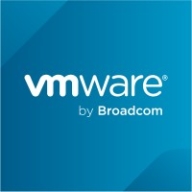

AWS Elastic Disaster Recovery and VMware Live Recovery are two robust solutions competing in the business data protection category. VMware Live Recovery appears to have the upper hand due to its superior feature set, customization options, and integration capabilities.
Features: AWS Elastic Disaster Recovery provides seamless database replication and scalability, which are key benefits for cost-effective and reliable disaster recovery. It is highly regarded for its ease of use, stability, and AWS's pay-as-you-go pricing model. On the other hand, VMware Live Recovery offers automated DR workflows, non-disruptive recovery testing, and comprehensive integration with VMware and storage solutions, providing flexibility in recovery plan management and disaster recovery testing without production impact.
Room for Improvement: AWS Elastic Disaster Recovery could enhance its offering with increased automation, more extensive logging, and quicker replication startup processes. Cost is a concern, requiring better management of replicated data usage. VMware Live Recovery users suggest improvements in interface usability, support for diverse storage solutions, automation, and pricing flexibility, while complex setup and configuration processes need attention.
Ease of Deployment and Customer Service: AWS Elastic Disaster Recovery supports a range of environments from on-premises to public cloud, showcasing flexibility. Its customer service receives high ratings for its effective technical support. VMware Live Recovery primarily supports on-premises environments with some hybrid capabilities. While its customer support is praised for responsiveness, users express a need for a structured ticketing system.
Pricing and ROI: AWS Elastic Disaster Recovery's fair pricing and pay-as-you-go model deliver significant ROI through reduced downtime and hardware costs. Despite higher costs, VMware Live Recovery's pricing matches its high functionality, with flexible annual and perpetual licensing models posing challenges for smaller businesses. Both solutions enhance business resilience and recovery, offering considerable ROI justification.
However, with AWS Elastic Disaster Recovery Service being a native service, integration is seamless, highlighting the return on investment.
In case of any issue, they are ready to provide support within the defined SLA timeline.
Our team has dedicated personnel for support who engage with the supporting teams.
They are knowledgeable.
The technical support from VMware is very good and operates based on a service level.
It is very good and very reliable.
AWS is not difficult, but the cost associated with replicating data to another region can be significant.
For our test labs, dev labs, and production, it is very stable.
This would detail user activity directly in the ACL console for easier debugging and auditing.
In AWS Disaster Recovery Service, these details are not available, making it difficult to check my replication status.
It's important for the cost to be justified based on the features used in production.
I would like to see improved integration services with other solutions, such as SIEM management or security monitoring.
The main issue is to improve the approach of resolving solutions.
Previously, when acquiring a license for Ethiopian drug supply chains, the price was significantly high, especially after Broadcom joined VMware.
For cloud-based solutions, the cost seems quite pricey, so we stick to on-premises deployment.
We mostly prefer to recommend this to customers due to ease of use, abundant features, and support.
AWS Elastic Disaster Recovery Service is a native service, integration is seamless.
It is used for data replication between data centers and allows for quick response in times of failure, ensuring data availability.
If I talk about vCenter and the auto failover of the VMs, such as live migration, that is a very cool feature that we require in our environment because we have different data centers, and if some of the servers fail, they automatically failover and move the VM from one side to another.
The capability and the functionality of the features are very helpful for us.
| Product | Market Share (%) |
|---|---|
| VMware Live Recovery | 7.2% |
| AWS Elastic Disaster Recovery | 1.7% |
| Other | 91.1% |


| Company Size | Count |
|---|---|
| Small Business | 5 |
| Midsize Enterprise | 4 |
| Large Enterprise | 7 |
| Company Size | Count |
|---|---|
| Small Business | 36 |
| Midsize Enterprise | 13 |
| Large Enterprise | 39 |
CloudEndure Disaster Recovery enables real-time replication and rapid recovery to enhance organizational resilience. Key features include block-level data replication, ease of use, cost-effectiveness, and automated recovery orchestration. Users benefit from increased efficiency, improved workflows, and enhanced data management, significantly improving organizational performance and business continuity.
We monitor all Disaster Recovery (DR) Software reviews to prevent fraudulent reviews and keep review quality high. We do not post reviews by company employees or direct competitors. We validate each review for authenticity via cross-reference with LinkedIn, and personal follow-up with the reviewer when necessary.